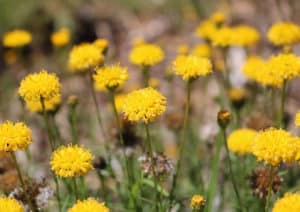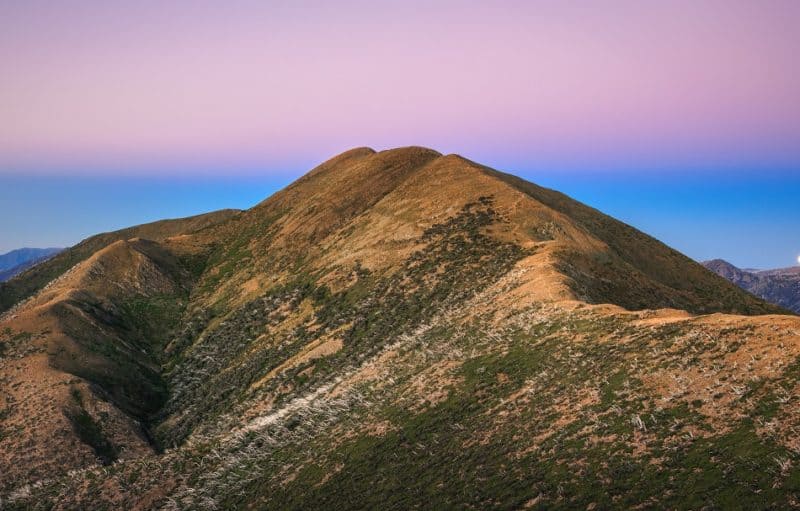NEWS 20 February 2023 | Page last updated: 21/02/2023
What is the best way to create a trail of destruction through a field of Spiny Rice-flowers, Button Wrinkleworts and Arching Flax-lily?
Drive a truck through the heart of 1.6 hectares of critically endangered old-growth grassland. This is what contract arborists did at Truganina Cemetery, compacting soil and crushing a living reminder of Victoria’s once-prolific wildflower fields.

The grassland at Truganina Cemetery is considered to be one of the finest examples of the grassland in Victoria. It’s a fenced settler cemetery that protects the largest naturally occurring stand of the endangered Button Wrinklewort remaining in Victoria – a remnant patch absolutely crucial for the long-term survival of this wildflower on the brink of extinction. The grassland is also home to Arching Flax-lily (critically endangered in Victoria), and Spiny Rice-flower, which is critically endangered federally.
It’s one of the 36 designated biodiversity hotspots mandated for protection under the Melbourne Strategic Assessment, the joint Commonwealth-Victoria agreement to protect endangered plants and animals as part of the expansion of Melbourne Urban Growth Boundary back in 2009.
The landholder, the Greater Metropolitan Cemeteries Trust, has done a good job over many years of respecting the irreplaceable grassland at Truganina Cemetery. But this failure highlights how easily “protections” break down.
A similar incident occurred a few months ago at Sewell’s Road Grassland (Conservation Area 12). There, fencing contractors for a developer trashed the roadside. The developer knew there was a large population of critically endangered Spiny Rice-flower present, but that information didn’t filter down to the workers on the ground. Luckily, the Spiny Rice-flower were on the other side of the road. Luckily, a council officer happened to see what was happening. And then there’s the complete destruction of Conservation Area 9, buried under asbestos-contaminated fill, still under investigation.
But luck isn’t a viable conservation strategy.
These “accidents” highlight important lessons. We need grassland specialists working in grasslands, not cowboys with chainsaws. Maybe we need a certification scheme, licenced to work in grasslands. And we need better training and career pathways for contractors.

These are not accidents. Ignorance and failures of proper process can’t be forgiven. This is 2023, and there’s no excuse any more. The people responsible need to pay a hefty price for this. We need deterrence.
To their credit, the Melbourne Strategic Assessment team at Department of Energy, Environment and Climate Action (DEECA) were quick to act once notified, but locking the gate after the horse has bolted isn’t ideal. They need to make sure every land holder knows their responsibilities and that those obligations apply to everyone down the chain to the workers on the ground.
The 36 Conservation Area biodiversity hotspots are mostly in private hands, many unprotected by even the most basic planning protections such a rural Conservation Zoning, or an Environmental Significance Overlay. Basic failures of governance need to be rectified.
Grasslands continue to suffer from death by a thousand cuts. Business as usual means ongoing loss. Our last grassland patches will continue to decline unless state and federal agencies reverse what’s going on. That means restoration. That means seed. That means a native seed strategy to boost an almost non-existent industry and we need measurable on-ground targets for hectares of restored grassland immediately. Spraying weeds isn’t enough.
As the current agencies appear to be doing such a terrible job, perhaps the solution is an overarching grassland authority with specialist knowledge, expertise and resources. This level of coordination and dedication might just give the grasslands a proper chance of survival.
And right now we need the federal authorities to step up. We need an audit of the Melbourne Strategic Assessment. We need to know just how bad things really are.
The route of the arborist’s truck (red dashed line) that crushed Button Wrinklewort (magenta), federally-listed as endangered, as well as patches of Spiny Rice-flower (green), which is critically endangered federally, and Arching Flax-lily (blue), critically endangered in Victoria.
Find all the latest events and sign-up to their mailing list on the grassyplains.net.au.
Protect our critically endangered grasslands
The Victorian National Parks Association hosts the Grassy Plains Network.

